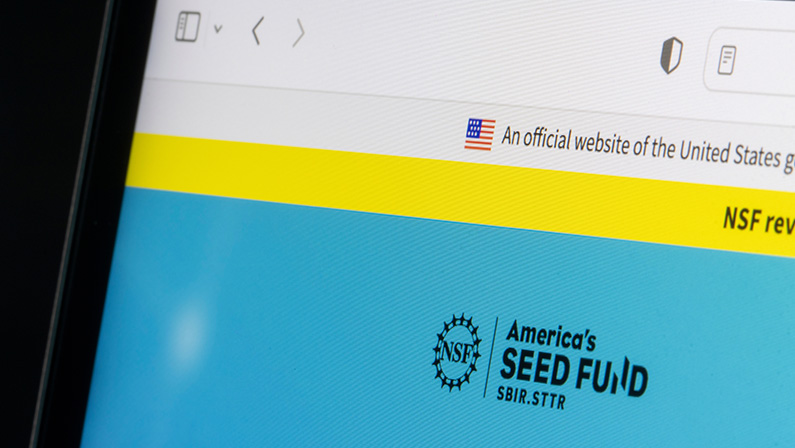Do you want to win an SBIR and STTR grant? Writing a winning SBIR/STTR proposal takes more than just a great idea. These federally funded programs are highly competitive, and reviewers are looking for proposals that demonstrate both strong scientific merit and a clear path to commercialization.
If you’re applying to the SBIR and STTR programs, you need to understand what agencies are looking for, how to position your innovation, and how to build a proposal that is clear, complete, and aligned with federal goals.
Let’s break down 12 practical tips to help you stand out and submit a proposal that’s built for success.
1. Understand the SBIR/STTR Program Requirements
Before you begin writing, take time to thoroughly understand the SBIR/STTR program. Each agency has its own focus areas, eligibility rules, and application formats.
Visit agency websites, read solicitations carefully, and review the specific requirements for both the SBIR and STTR grant programs. For example, STTR proposals require a formal collaboration with a research institution, while SBIR proposals do not.
Knowing the details helps you avoid simple disqualifiers and ensures you’re writing with the right structure and intent from the start.
2. Align Your Proposal with the Agency’s Mission
Every agency funds research that aligns with its goals and strategic priorities. Successful proposals clearly show how the innovation supports that mission.
Read the agency’s most recent funding opportunity announcements (FOAs) and look at previously funded projects. Tailor your proposal to reflect how your technology or solution will meet a need that the agency is already working to address.
This alignment is critical for showing reviewers that your project fits within the scope of their SBIR and STTR grant programs.
3. Develop a Strong Executive Summary
Your executive summary is often the first section reviewers will read—and it sets the tone for the entire proposal.
Use it to briefly explain:
- What the innovation is
- Why it matters
- How it works
- What the key benefits and potential markets are
Keep it concise, engaging, and focused. A strong executive summary helps orient reviewers and keeps them interested in reading the rest of the document.
4. Define a Clear Problem Statement
Start your technical section with a clearly defined problem. Explain why it is important, who it affects, and what existing solutions fall short.
A vague or overly broad problem statement can weaken the impact of your proposal. Be specific and support your claims with data or references. This helps establish the relevance and urgency of your innovation.
5. Describe an Innovative Solution

Your proposed solution should show true innovation. It should not be a small improvement to an existing product unless that improvement solves a critical unmet need.
Describe what sets your solution apart. Is it a new application of existing technology? A novel process? A groundbreaking product? Back up your claims with evidence or preliminary data when possible.
Agencies funding SBIR and STTR grants are looking for game-changing technologies that have potential for real-world impact.
6. Present a Realistic Approach and Milestones
Outline a clear and realistic work plan. Break down your project into specific phases and describe what you plan to accomplish in each one.
Include technical objectives, methods, timelines, and measurable milestones. Reviewers want to see that your team understands how to move from concept to prototype, and that you’ve thought through the steps in between.
7. Address Commercialization Potential
Even at the early stages, agencies want to know how your innovation could eventually reach the market. For SBIR proposals in particular, the path to commercialization is critical.
Describe your target customer, potential market size, and how your solution could generate revenue. Mention any partnerships, pilot users, or customer feedback you’ve received so far.
Understanding your business model and go-to-market strategy is essential for a strong proposal to the SBIR/STTR program.
8. Highlight Team Expertise and Capabilities
Your team’s background can make or break your proposal. Reviewers want confidence that you have the right people in place to execute the project.
Highlight each team member’s relevant experience, technical background, and past successes. If you’re applying for an STTR, explain how your partnership with a research institution adds value.
If there are gaps in your team, mention how you plan to fill them—through hiring, consultants, or collaborators.
9. Create a Detailed and Realistic Budget
More than just a number, your budget is a reflection of your planning and understanding of the project scope. Make sure your budget matches your technical plan, and avoid padding or underestimating costs.
Include explanations for major line items, such as labor, materials, and subcontractors. Use agency-specific budget templates and make sure you stay within funding caps for the phase you’re applying to.
10. Ensure Strong Proposal Presentation

Clear writing and organization go a long way. Reviewers often read dozens of proposals, so help them find information quickly. Use headers, bullet points, and visuals when appropriate.
Make sure the tone is professional but approachable. Avoid jargon, and proofread carefully to eliminate grammar or formatting issues.
A polished proposal shows attention to detail and respect for the review process.
11. Leverage Letters of Support and Collaboration
Strong letters of support can help build credibility. These can come from potential customers, strategic partners, research collaborators, or economic development partners.
Each letter should explain the writer’s relationship to your project and why they believe in its potential. A letter that shows interest in piloting or purchasing your technology can be especially persuasive.
12. Review and Seek Feedback
Before you hit submit, review everything thoroughly. Make sure all required sections are complete, your data is accurate, and your goals are clear.
Whenever possible, ask others to review your proposal. Industry peers, mentors, or consultants with SBIR/STTR experience can offer valuable insight. Early feedback gives you time to make improvements before the deadline.
Ready to Strengthen Your SBIR/STTR Proposal?

Crafting a winning proposal for the SBIR and STTR programs takes strategy, clarity, and alignment with agency goals. It also helps to have expert support along the way.
If you’re looking for guidance, strategy, or proposal development support, connect with an economic development consultant at LSI. Our team specializes in helping small businesses succeed in the SBIR and STTR grant programs, from early planning to final submission.
Explore how LSI can support your innovation goals through SBIR assistance and discover more about how your business can benefit from SBIR grants. With the right strategy and the right partners, your next proposal can be your most competitive one yet.






